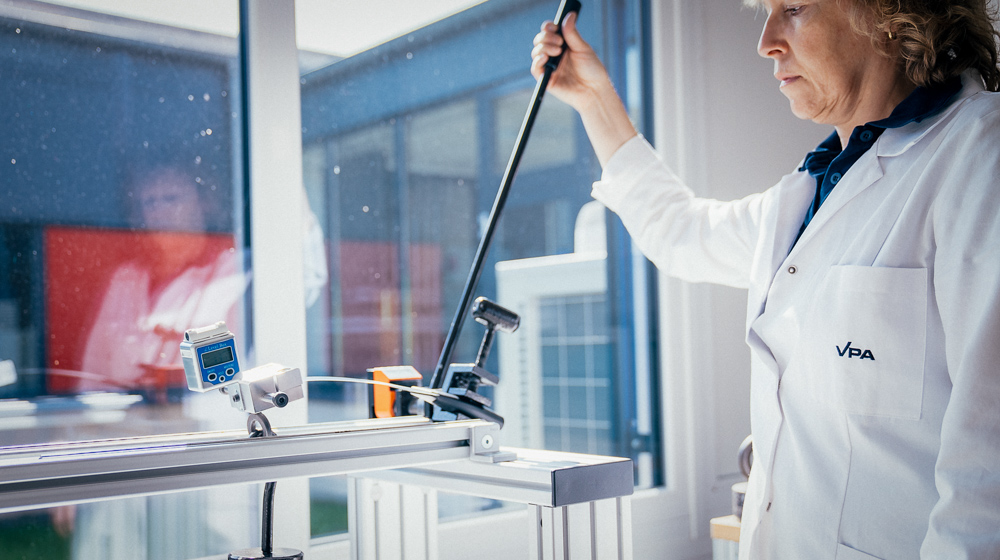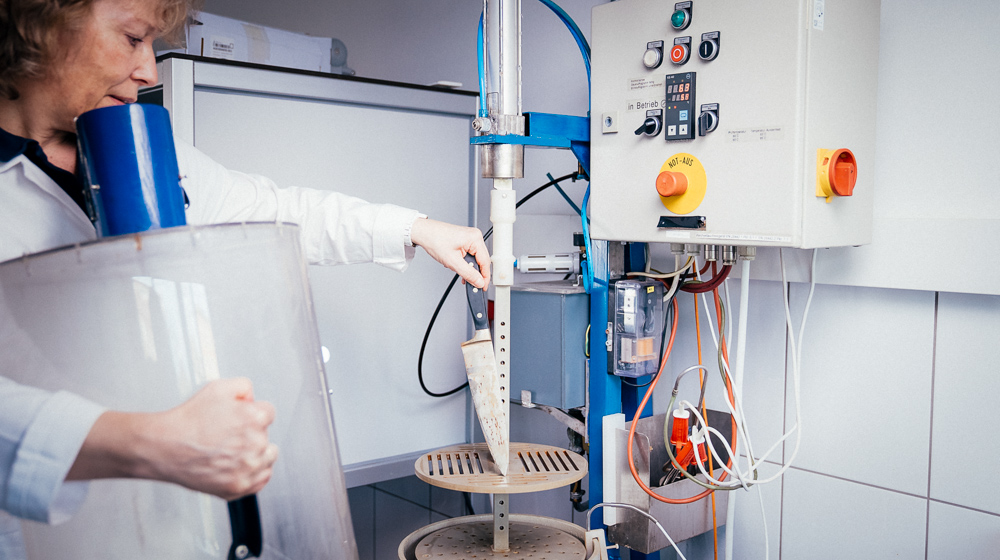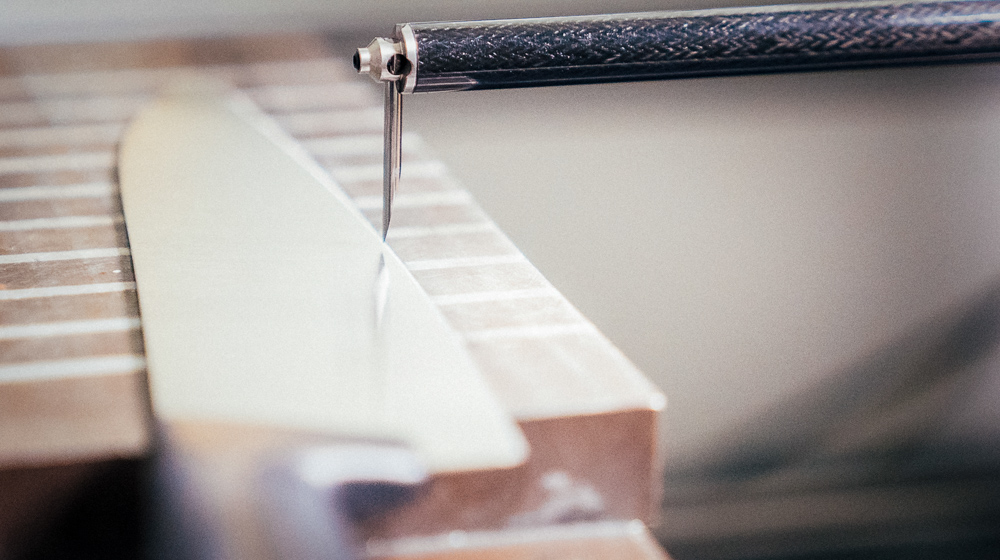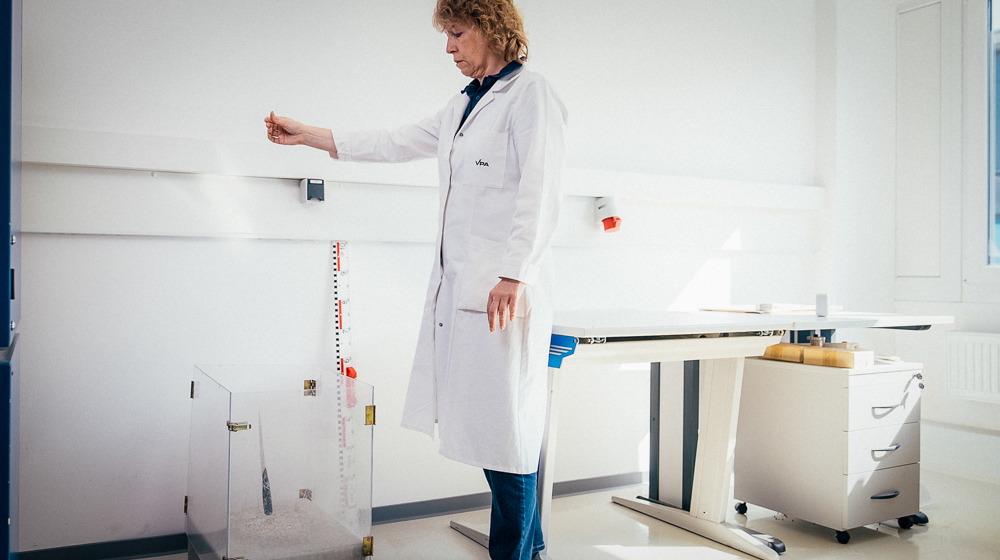When it comes to kitchen knives, we usually test the following properties: 1. The sharpness of the knife and the durability of the sharpness (as new and after a simple resharpening). 2. Practical tests (when cutting common foodstuffs) 3. Steel quality and corrosion resistance. 4. Durability against impacts and falls.
Sharpness and wear resistance
The initial sharpness of the knife is measured by allowing each knife to cut three times (three cutting cycles) through a stack of a special test paper under controlled conditions. The more strips the knife can cut through in total, the sharper the knife is

The wear resistance of the knives is measured by measuring how deep the knives managed to cut through the cardboard pile after a total of sixty so-called cutting cycles. The knives are then sharpened on a simple knife sharpener for consumer use, after which the sharpness is measured again. (Parts of this measurement method can be found in the standard EN ISO 8442-5:2004.)
Practical tests
The knives are used to cut different foodstuffs to assess the force needed, how well the cut will be, how much the food is pressed together, how much liquid is pushed out and how much the food sticks to the knife. The different foods tested are chives, overripe tomatoes, meat, soft cheese, hard cheese, thick carrots and pumpkin.
Steel quality and corrosion resistance
Every knife is fixed in a test rig and the blade is then bent with a force of 30 Newtons for 10 seconds in both directions one after the other. The blades must not show any deformation of more than 3º (The test method is described in the standard EN ISO 8442-1: 1998.

- Corrosion test
The knife blades are dipped upside down for six hours in a 60 degree saline solution (1%). (The test method is described in the standard EN ISO 8442-1: 1998.) Then the laboratory makes a visual assessment of how the knives managed to withstand rust attack. 
Test device for measuring corrosion. Photo: Moritz Dornbusch - The hardness of the knife steel
The laboratory also measures the hardness of the steel. This is stated in the table but is not included in the grading. 
The contour gauge assesses the angle and thickness of the edge. Photo: Moritz Dornbusch
Durability against impacts and falls
The knives are dropped five times from a height of 1.2 meters onto a cement floor in the following way: with the handle straight down, with the back of the knife straight down, with both sides of the knife down. Each knife is thus dropped a total of 20 times into the ground. (The test method is described in the standard EN ISO 8442-1: 1998.)


